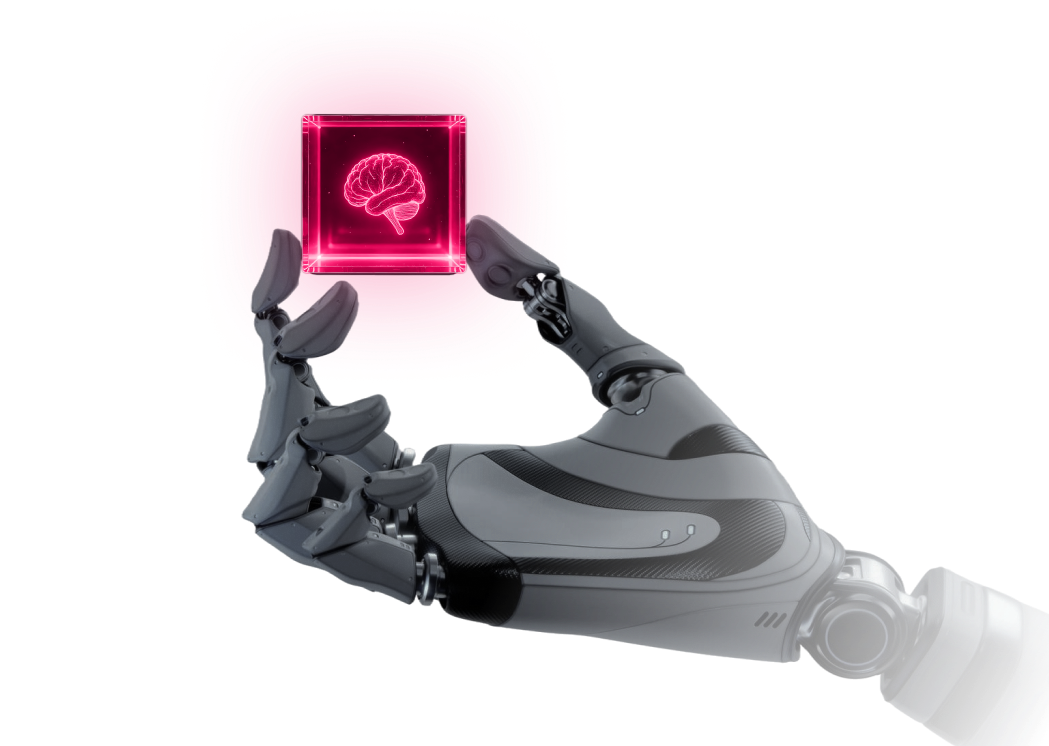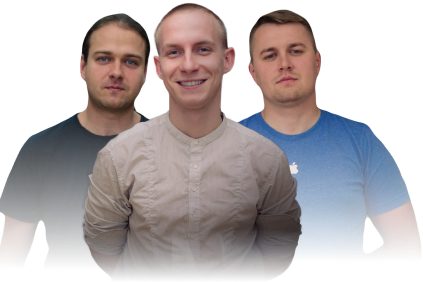Traditional surveillance cameras require human involvement to process and analyze captured video. The procedure may require a significant amount of time and effort, slowing the reaction to the activities detected by the cameras and reducing overall protection.
AI surveillance cameras can address this problem by combining video recognition and advanced analysis. No wonder the growing demand for AI CCTV cameras is stimulating market growth, and, according to predictions, it will reach $82.52 billion by 2034.
In this article, we will introduce you to the advantages of AI-powered CCTV cameras and explain how these technologies can transform modern security and surveillance. Here, you will discover the main benefits and potential challenges you may face during implementation and use.
What Is an AI CCTV Surveillance Camera?
AI-powered closed-circuit television (CCTV) cameras are specialized devices for surveillance. They effectively perform advanced analysis based on object detection and recognition.

Artificial intelligence enables more accurate responses to activities in observed areas, enhancing protection and reducing the need for human effort. Such cameras are actively used for crime detection and prevention, thanks to their ability to analyze huge amounts of data in real-time and respond to incidents much faster than a human operator could.
Why Do CCTV AI Cameras Work Better than Traditional CCTV?
Traditional systems for surveillance heavily rely on human operators for monitoring. It makes security vulnerable to human factors, such as fatigue or loss of concentration, that can be caused by prolonged periods of observation. As a result, the effectiveness also suffers, as operators will not be able to respond to security incidents fast enough and may miss some of them.
An artificial intelligence CCTV camera, meanwhile, applies machine learning algorithms to detect anomalies and potential threats in real-time mode. Constant AI-powered monitoring enables a new level of precision and surveillance efficiency.
Key Features and Technologies of AI Surveillance Cameras
The best way to see the full potential for improved CCTV technology is to review the key features and functions it can perform.
Object detection & classification
With the help of computer vision and deep learning models, AI cameras can identify and categorize objects in a video, including people, vehicles, etc. It helps to exclude irrelevant factors and focus on meaningful activities.
Facial recognition & watchlists
Artificial intelligence uses face recognition to detect and check if a person is present in databases and watchlists. This feature may be used for enhanced access control and person identification.
Find out how Agentic AI takes automation to a new level
Behavior analysis & anomaly detection
With the help of machine learning and predictive analytics, AI can easily track human and vehicle behavior patterns to identify unusual activities and potential risks. For example, if the person is running or trespassing, the system may alert.
Real-time alerts & notifications
Advanced CCTV cameras are often used with various mobile integrations and smart alarms. Instant notifications to security teams via applications or other contact solutions streamline reactions and improve the prevention of incidents.
Edge vs. cloud processing
Edge processing refers to the capability of AI to run on the camera or local devices, enabling fast responses during real-time detection. Cloud processing, meanwhile, is better for large organizations with multi-location monitoring. It also enables long-term data storage in the cloud.
How Do CCTV Cameras Work? Modern Use Cases and Industry Applications
While law enforcement bodies and agencies are the obvious users who win the most from advanced security systems with AI-powered CCTV, several industries can gain a lot from them.
Retail and commercial spaces
Security cameras are extremely useful for flow monitoring in large shopping areas. For example, video capture and artificial intelligence, empowered by object detection and behavior analysis, help prevent shoplifting. They can also be used to track staff performance and evaluate current service quality.
Industrial and manufacturing
Artificial intelligence cameras ensure safer working zones and reduce potential risk via constant monitoring. For instance, they can detect equipment malfunctions or fire hazards before they can escalate and cause harm to workers or property. Surveillance cameras can also be placed in restricted zones and machinery areas to monitor the territory and detect anomalies.

Smart cities and infrastructure
Smart cameras upgrade traffic management and parking systems and enhance public safety with real-time surveillance. For example, AI cameras can detect unusual individuals and vehicle behaviors, as well as emergencies. Recently, we have created an AI-based parking solution that monitors and enforces parking rules. It enables more effective decision-making for confirming or rejecting the presence of violations with 95% accuracy.
Corporate and enterprise security
Artificial intelligence can significantly upgrade access control for enterprises with the help of facial recognition. It can detect unauthorized entrance and send real-time alerts in case of potential danger. AI-powered CCTV strengthens security measures and seriously reduces the risk of data breaches.
Benefits of Artificial Intelligence CCTV Cameras
As you can see, artificial intelligence enhances protection measures and improves the approach to modern surveillance, but the list of advantages is much wider.
Proactive threat detection
If traditional systems can only capture video and then require operators' actions to detect and react, AI-powered CCTV sends notifications when it observes risky situations and streamlines threat prevention.
Reduced false alarms
Artificial intelligence is quite an accurate tool. By reducing errors caused by human factors and applying detection and recognition algorithms, AI can minimize false alarms, acting only when the captured pattern matches preset rules.
Real-time decision-making
Real-time detection and decision-making are two of the most crucial advantages of AI-enhanced cameras. It analyzes video streams and identifies abnormal events right away. In combination with an alarm and an access control system, an AI CCTV camera can become a comprehensive security tool to deal with potential threats.
Operational efficiency
Artificial intelligence can process vast amounts of data and monitor several video channels at the same time without losing efficiency and concentration over long observation periods. It enhances human operators and increases the safety of the observed area.
Our AI and Data Science Case Studies

Enhanced analytics for business intelligence
AI cameras can analyze a wide range of visual signs, including human body language and suspicious objects. Multi-dimensional analysis can also deepen the understanding of potential dangers. Various businesses can also utilize cameras to monitor their employees' activities and assess the quality of the customer experience.
Cost savings over time
Cameras powered by artificial intelligence are also extremely cost-effective in the long-term perspective. They lower the need for human intervention and enable efficient operation of smaller surveillance teams.
Key Challenges and Limitations of AI CCTV Cameras
For the efficient use of advanced surveillance cameras, we recommend learning not only about their advantages but also about their main challenges and limitations, to be prepared for potential difficulties and concerns.
Privacy concerns related to AI CCTV cameras
Constant monitoring often raises ethical and legal concerns due to the use of facial recognition and tracking technologies. Data breaches may lead to unauthorized access to captured video and metadata and cause a risk of identity theft.
The collection of sensitive data should be combined with robust security measures and compliance with regional regulations (for example, GDPR). Round-the-clock monitoring may also make communities feel that they are always under surveillance, which can raise discomfort and concern about excessive control.
Initial investment and integration complexity
However, artificial intelligences ensure cost savings in the future; initial costs can be quite high. Advanced cameras require additional solutions, such as storage and servers, that are more costly than those used in traditional systems.
Integration with existing CCTV infrastructure is rather challenging and requires specialist expertise. You should also include maintenance and software updates in the budget to make sure the system operates as it is supposed to.

Reliance on data quality and network stability
AI models’ accuracy depends on the quality of data used for their training. Additionally, for efficient operation, AI cameras require accurate placement and suitable lighting to capture clear images. Poor footage quality may lead to misidentification or detection issues. The lack of a stable network can also significantly limit functionality and cause blind spots or missed events.
Potential for bias or algorithm errors
The lack of versatile data during training may cause errors in the identification of individuals in certain demographic groups if they were not included during model preparation. Biases in data and algorithms can lead to flagging innocent actions as suspicious and failing to detect real threats, underestimating the danger. Security staff also need to understand that AI is not always accurate, and human supervision is necessary to ensure that no errors occur.
Regulatory compliance
Many regions have very strict regulations regarding the collection, storage, and use of video data. So, you need to check yours to ensure you will not have any problems with the law. For instance, the GDPR covers Europe, while in California, it is the CCPA. Also, if the government regulations are updated, you will have to adapt the system to ensure compliance.
Let’s build software tailored to your needs
Future trends
Observing how AI CCTV cameras continue to improve and get new advanced capabilities, we believe that in the future surveillance systems will become more sophisticated and, as a result, even more effective. With AI evolvement, the accuracy will also grow, reducing false positive and negative detections.
With the rise of IoT and smart city ecosystems, AI CCTV cameras will be more connected to traffic management and emergency services. IoT sensors will expand automated responses by including lighting adjustment, for example. With centralized cloud-based monitoring systems, companies will be able to cover larger territories across different sites. Their use may be extended to more industries and applications where constant monitoring is essential.
In our experience, the rise of technology also triggers more severe government regulations on how new types of data should be processed. Companies will need to ensure fair and transparent operation of their AI systems and apply privacy methods to protect sensitive data.
Conclusions
Artificial intelligence CCTV changes the approach to public safety and surveillance measures. It drives better security and ensures actionable insight, increasing the business value. With modern AI-powered CCTV cameras, businesses can be sure that their territories are protected and free of prohibited trespassing.
If you are ready to implement AI-driven camera solutions, contact Requestum for consultation, and we will discuss what suits you best.

Our team is dedicated to delivering high-quality services and achieving results that exceed clients' expectations. Let’s discuss how we can help your business succeed.




SHARE: